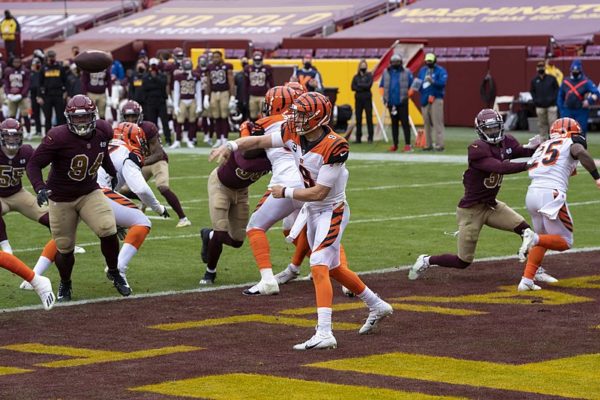Recently I’ve seen many articles debating the best way to start your fantasy football draft. While there isn’t an answer set in stone, there are many ways to draft to improve your probability of winning. Let’s start with the top of the draft.
Before I delve into this, let me remind you that this article is directed for PPR scoring leagues. Also let me mention that this corresponds with Shawn Siegele’s Zero Running Back Theory, if you haven’t read it I strongly advise that you do so.
Most of you who will be reading this article already know about the Late Round Quarterback theory and are debating between a running back or a wide receiver for your first selection (although at the end of the 1st, Jimmy Graham also deserves consideration – that’s for another article though).
While I believe that drafting a running back can be an effective strategy with an early first round pick, I see it being detrimental with a later pick. Here’s why: Fantasy football is about scoring more points than your opponent. If you review the top 12 scoring (non-quarterbacks) per game last season, you will discover that just three running backs and eight wide receivers make the list. The table below shows the top 12 scoring (non-quarterbacks) per game from last season:
| OVR | PLAYER | POS | PTS | AVG |
|---|---|---|---|---|
| 1 | Charles, Jamaal KCC | RB | 380 | 25.33 |
| 2 | Gordon, Josh CLE | WR | 314.4 | 22.46 |
| 3 | Jones, Julio ATL | WR | 110.7 | 22.14 |
| 4 | Johnson, Calvin DET | WR | 304.2 | 21.73 |
| 5 | Forte, Matt CHI | RB | 339.3 | 21.21 |
| 6 | McCoy, LeSean PHI | RB | 331.6 | 20.73 |
| 7 | Thomas, Demaryius DEN | WR | 319 | 19.94 |
| 8 | Brown, Antonio PIT | WR | 314.9 | 19.68 |
| 9 | Green, A.J. CIN | WR | 306.6 | 19.16 |
| 10 | Blackmon, Justin JAC | WR | 76.4 | 19.10 |
| 11 | Marshall, Brandon CHI | WR | 305.5 | 19.09 |
| 12 | Graham, Jimmy NOS | TE | 303.5 | 18.97 |
In simple terms, the top wide receivers scored more points than top running backs. Skeptics would argue that this is incorrect because Jamaal Charles led all non-quarterbacks in scoring. Yes, that is correct but he is followed by Josh Gordon, Julio Jones, and Calvin Johnson before the next running back.
Next you’re probably wondering why this matters?
It matters because if you don’t get one of the top running backs, (when I say top I’m referring to one of the guys who has a chance to lead all non-QBs in scoring) specifically Jamaal Charles, Matt Forte, or LeSean McCoy, you’re pigeonholing yourself.
How, you ask?
Think of it this way: You get the 8th pick. Instead of taking Calvin Johnson or Demaryius Thomas, you decide to take Marshawn Lynch because you want to fill your running back slot out(s) early, “while there are still great running backs available.” I don’t consider Lynch one of the top point producers because he doesn’t catch enough passes – and that’s not changing anytime soon. While you did get a reliable running back, the problem is you’re leaving points on the board. Assuming Lynch doesn’t decline, he is likely to score 17.06 fantasy points per game – his average for the last two seasons.
Calvin Johnson has averaged 21.57 fantasy points per game over his last two seasons. Removing injuries from the equation, we can assume Calvin will score 4.5 more fantasy points per game than Lynch. So now, assuming you drafted Lynch, you’re behind the Charles, McCoy, and Forte owners in scoring and you have no way to make the points up because both of you are looking for the same players going forward.
Alternatively, you draft Calvin Johnson and start your draft with a lead in points instead of a deficit. While others continue to scramble for running backs in the 2nd and 3rd rounds, you can build on your lead with a guy like Demaryius Thomas, Dez Bryant, A.J. Green or Julio Jones in the 2nd and someone one like Jordy Nelson or Alshon Jeffery in the 3rd. All of these wide receivers are very likely to outscore 2nd round running backs like Alfred Morris and Doug Martin. With this strategy, instead of spending your draft trying to “catch-up”, you simply select later round running backs to maintain your lead.
This can be accomplishable in PPR leagues by selecting running backs like Danny Woodhead, Shane Vereen, and Pierre Thomas. It’s also important to be active in terms of free agent pickups. Any time a running back who receivers a large number of touches goes down, it’s a chance for you to improve your running back corps.
If you are going to take a risk and draft a running back early, my advice is to make sure he catches passes. To decrease the deficit from drafting a running back early, your best bet is grabbing someone like Le’Veon Bell. His receiving numbers increase his probability of finishing as a top back. If he can improve his efficiency, he has the volume of touches to become a top back.
In summary, if you do not have the opportunity to draft one of the top running backs, the best approach is to draft wide receivers – early and often – and never look back as you maintain your advantage.



